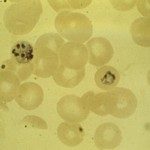Lien vers Pubmed [PMID] – 17039375
Anat Embryol (Berl) 2006 Dec; 211 Suppl 1(): 51-6
The transcription factors Pax3 and Pax7 are important regulators of myogenic cell fate, as demonstrated by genetic manipulations in the mouse embryo. Pax3 lies genetically upstream of MyoD and has also been shown recently to directly control Myf5 transcription in derivatives of the hypaxial somite, where it also plays an important role in ensuring cell survival. Both Pax3 and Pax7 are expressed in myogenic progenitor cells derived from the central dermomyotome that make a major contribution to skeletal muscle growth. In Pax3/Pax7 double mutants, the myogenic determination genes, Myf5 and MyoD, are not activated in these cells which become incorporated into other tissues or die. This again demonstrates the dual function of Pax factors in regulating the entry of progenitor cells into the myogenic programme and in ensuring their survival. Pax3 expression marks cells in the dermomyotome that either become myogenic or downregulate Pax3 and assume another cell fate. The latter include the smooth muscle cells of the dorsal aorta that share a common clonal origin with the skeletal muscle of the myotome, thus illustrating the initial multipotency of Pax3 expressing cells.

